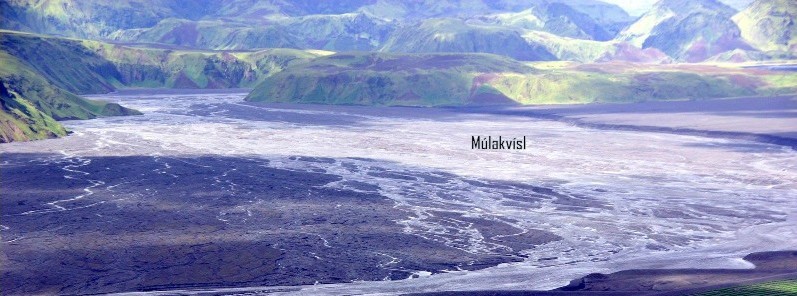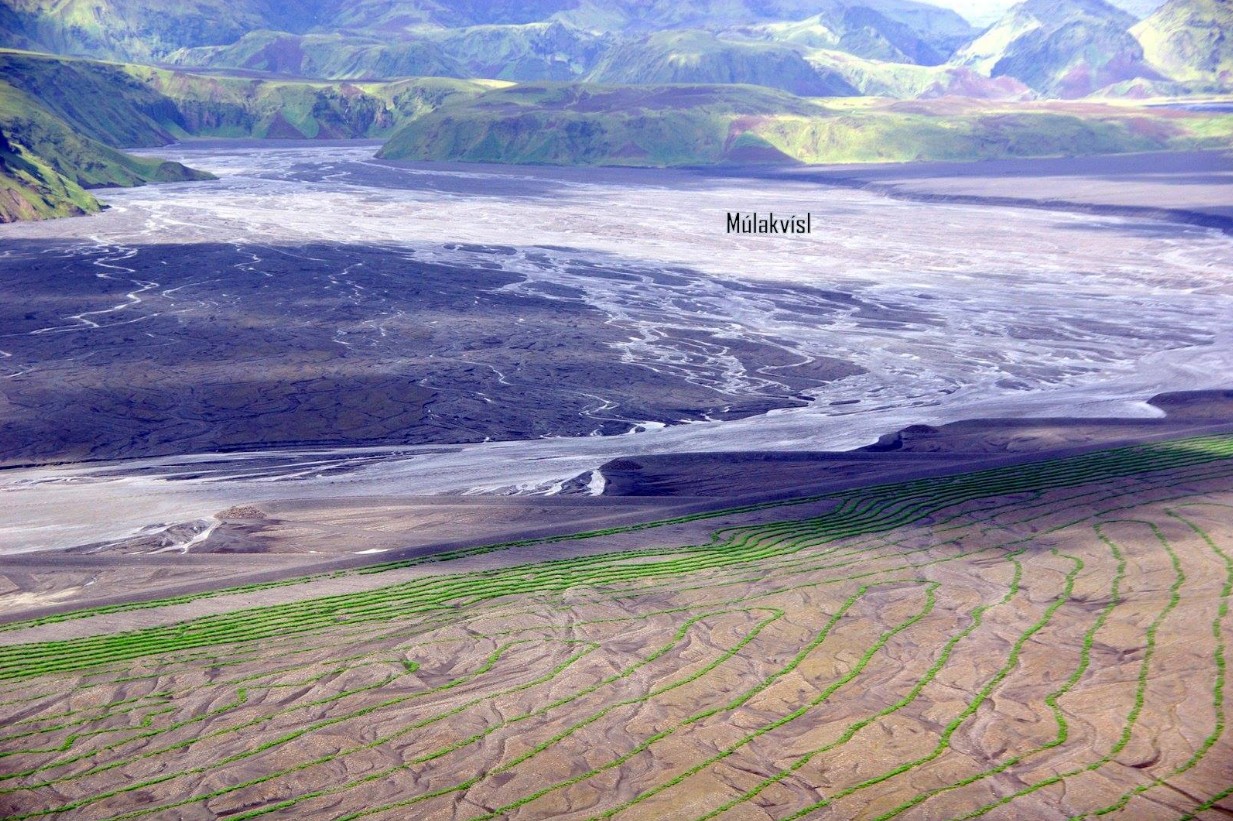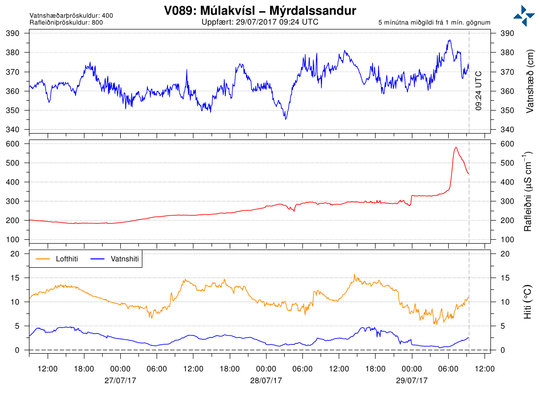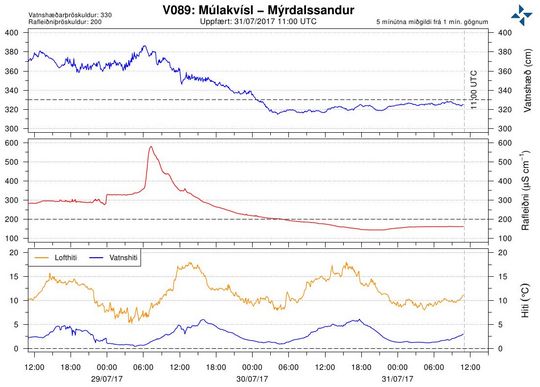Katla volcano alert raised, glacial outburst flood ongoing in Múlakvísl river

A glacial outburst flood started in Iceland's Múlakvísl river around midnight UTC on July 29, 2017. Electrical conductivity is now measured around 580µS/cm and has increased rapidly the last hour, Icelandic Met Office (IMO) reported 10:14 UTC on July 29. Increasing water levels of this river are an important indicator of Katla's upcoming volcanic eruptions.
Conductivity is an indicator for the amount of geothermal meltwater in the river. Prior to glacial river surges, the conductivity in Múlakvísl river starts rising. This elevation of conductivity can last several days before an actual river surge starts.
At 05:13 UTC on July 29, IMO reported that the color code for Katla volcano is now Yellow (signs of elevated unrest above known background levels) due to glacial flood and seismic tremor.
"The scenario is very similar to the 2011 glacial flood event when the Ring Road bridge was destroyed," the agency said.

Glacial outburst flood – Iceland's Múlakvísl river – July 29, 2017. Credit: IMO
The glacial outburst flood can be expected to reach its maximum within a few hours, IMO warned at 10:14 UTC.
People are advised to stay away from the river due to gas pollution, as the river is showing a dark color and smells of sulfur. The Department of Civil Protection of the National Police has been alerted and Road Administration is on the site and prepared to close the main road if needed.

Updates
July 30
"The glacial outburst flood in Múlakvísl is slowly declining, but there is still a lot of water in the river and people are advised to keep caution when traveling near the river," IMO said at 01:59 UTC on July 30.
July 31
"The glacial outburst flood from the ice-covered Katla volcano has ended. The flood peaked in the Múlakvísl river on July 29. Recent aerial photographs of the ice-covered caldera show signs of ice-surface subsidence due to drainage of meltwater," IMO said at 15:21 UTC on July 31.
Conductivity measurements have slowly reached normal levels and seismicity in the area is within the normal. Travelers are advised to show caution near the source of the river due to possible gas emissions.

Geological summary
Katla volcano, located near the southern end of Iceland's eastern volcanic zone, is hidden beneath the Myrdalsjökull icecap. The subglacial basaltic-to-rhyolitic volcano is one of Iceland's most active and is a frequent producer of damaging jökulhlaups, or glacier-outburst floods.
A large 10 x 14 km (6.2 – 8.7 miles) subglacial caldera with a long axis in a NW-SE direction is up to 750 m (2 500 feet) deep. Its high point reaches 1 380 m (4 199 feet), and three major outlet glaciers have breached its rim.
Although most historical eruptions have taken place from fissures inside the caldera, the Eldgjá fissure system, which extends about 60 km (37 miles) 18 to the NE from the current ice margin towards Grímsvötn volcano, has been the source of major Holocene eruptions.
An eruption from the Eldgjá fissure system about 934 CE produced a voluminous lava flow of about 18 km3 (4.31 mi3), one of the world's largest known Holocene lava flows.
Katla has been the source of frequent subglacial basaltic explosive eruptions that have been among the largest tephra-producers in Iceland during historical time and has also produced numerous dacitic explosive eruptions during the Holocene. (GVP)
Featured image: Glacial outburst flood – Iceland's Múlakvísl river – July 29, 2017. Credit: IMO

Commenting rules and guidelines
We value the thoughts and opinions of our readers and welcome healthy discussions on our website. In order to maintain a respectful and positive community, we ask that all commenters follow these rules:
We reserve the right to remove any comments that violate these rules. By commenting on our website, you agree to abide by these guidelines. Thank you for helping to create a positive and welcoming environment for all.